
Mt. Mayon: The Perfect Cone Volcano
Explore the majestic Mt. Mayon in the Philippines, famous for its perfect cone shape, rich history, and thrilling outdoor activities.
Mt. Mayon, located in the Bicol Region of the Philippines, is renowned for its near-perfect cone shape. This iconic volcano is not only a natural wonder but also a cultural treasure, attracting thousands of visitors each year. Standing at 2,463 meters, it is the most active volcano in the Philippines, offering a dramatic backdrop to the lush landscape. The surrounding area of Mt. Mayon is filled with activities for adventure seekers and nature lovers alike. You can hike up the volcano, explore nearby caves, or take an ATV tour through its scenic trails. The nearby Cagsawa Ruins offer a historical perspective, with the remnants of a church that was buried during an eruption in 1814. Local folklore adds an enchanting element to your visit. According to legend, the volcano is named after the beautiful heroine Daragang Magayon, whose tragic love story is said to be the reason behind the volcano's frequent eruptions. For a unique cultural experience, try visiting during the Ibalong Festival, usually held in August, which features street parades, dances, and other festivities celebrating local mythology and history.
Local tips in Mt. Mayon
- Best time to visit is during the dry season, from November to April, to avoid sudden weather changes.
- Hire a local guide for hiking to ensure safety and gain insightful information about the volcano.
- Visit the Cagsawa Ruins for a historical perspective and great photo opportunities with Mt. Mayon in the background.
- Try the local delicacies such as Bicol Express and Laing, which are rich in coconut milk and spices.
- Check the volcanic activity level before planning your visit, as it may affect accessibility and safety.
Mt. Mayon: The Perfect Cone Volcano
Mt. Mayon, located in the Bicol Region of the Philippines, is renowned for its near-perfect cone shape. This iconic volcano is not only a natural wonder but also a cultural treasure, attracting thousands of visitors each year. Standing at 2,463 meters, it is the most active volcano in the Philippines, offering a dramatic backdrop to the lush landscape. The surrounding area of Mt. Mayon is filled with activities for adventure seekers and nature lovers alike. You can hike up the volcano, explore nearby caves, or take an ATV tour through its scenic trails. The nearby Cagsawa Ruins offer a historical perspective, with the remnants of a church that was buried during an eruption in 1814. Local folklore adds an enchanting element to your visit. According to legend, the volcano is named after the beautiful heroine Daragang Magayon, whose tragic love story is said to be the reason behind the volcano's frequent eruptions. For a unique cultural experience, try visiting during the Ibalong Festival, usually held in August, which features street parades, dances, and other festivities celebrating local mythology and history.
When is the best time to go to Mt. Mayon?
Iconic landmarks you can’t miss
Mayon Volcano Natural Park
Explore the breathtaking beauty of Mayon Volcano Natural Park, home to the Philippines' most iconic volcano and stunning natural landscapes.

Mayon Volcano Center Point
Explore the breathtaking Mayon Volcano Centre Point, a stunning nature preserve showcasing the iconic volcano's beauty and vibrant ecosystems.
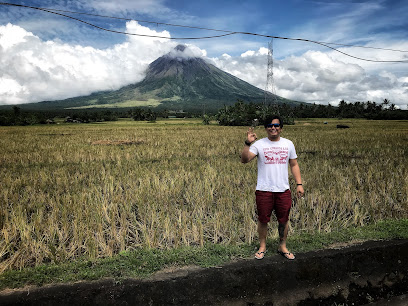
Mayon Volcano
Discover the breathtaking beauty of Mayon Volcano in Albay, Philippines – a natural wonder with stunning views and adventure around every corner.

Mayon best view
Discover the breathtaking beauty of Mayon Volcano at this stunning viewpoint, perfect for photographers and nature lovers alike.

Mt. Mayon Circumferential Road Tower
Experience breathtaking views and rich local culture at Mt. Mayon Circumferential Road Tower in Legazpi City, Albay, the gateway to nature's wonders.

Mayon Volcano Crater
Explore the breathtaking beauty of Mayon Volcano Crater in Albay – a true natural wonder and a must-visit destination for adventure seekers.

Unmissable attractions to see
Ligñon Hill Nature Park
Experience breathtaking views, lush trails, and thrilling adventures at Ligñon Hill Nature Park in Legazpi City, Albay.

Albay Park & Wildlife
Explore Albay Park & Wildlife in Legazpi City, where exotic animals and lush landscapes come together for an unforgettable family adventure.
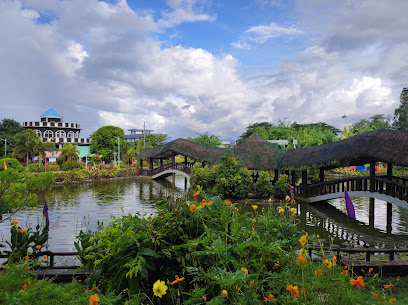
Kawa-Kawa Hill
Discover the breathtaking beauty of Kawa-Kawa Hill in Ligao, Albay, a unique park with stunning views, hiking trails, and cultural landmarks.

Quituinan Hill
Experience the historical allure and breathtaking views of Quituinan Hill in Albay, a must-visit destination for every traveler seeking adventure and beauty.
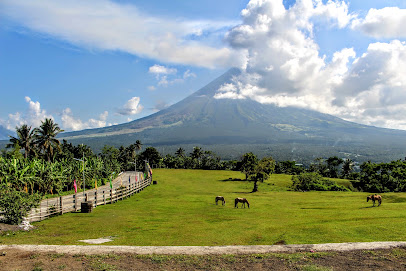
Kalayaan Park
Explore Kalayaan Park in Legazpi City, a serene retreat filled with lush greenery, stunning views, and perfect picnic spots for a memorable experience.

Giant Statue of Nuestra Señora de Salvacion
Explore the stunning Giant Statue of Nuestra Señora de Salvación in Legazpi City, an iconic landmark offering breathtaking views and cultural significance.

Jovellar Underground River
Discover the enchanting beauty of Jovellar Underground River in Albay, a stunning natural wonder rich in biodiversity and geological marvels.

SILI WAITING SHED
Discover the Sili Waiting Shed in Daraga, Albay, a historical landmark that captures the essence of local culture and offers stunning views of Mayon Volcano.
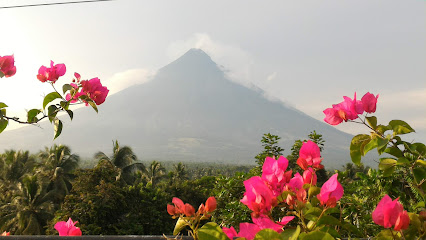
Green Lava
Explore the serene beauty of Green Lava Park in Daraga, Albay, where lush landscapes and breathtaking views await every visitor.

Vanishing Island
Experience the serene beauty of Vanishing Island in Albay, Philippines, where the sands vanish with the tides and tranquility reigns.
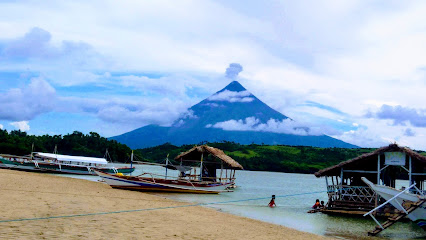
Hoyop-hoyopan Cave
Explore the stunning Hoyop-hoyopan Cave in Camalig, Albay, a natural wonder filled with captivating rock formations and rich historical significance.

Hobbit Hill Ligao City
Experience the magic of Hobbit Hill in Ligao City, a whimsical tourist attraction inspired by Tolkien's Hobbiton, perfect for photo opportunities and adventure.

Mayon Rest House and Mayon Planetarium
Experience the beauty of Mayon Volcano and explore the stars at Mayon Rest House and Planetarium, a perfect blend of nature and astronomy in Albay.
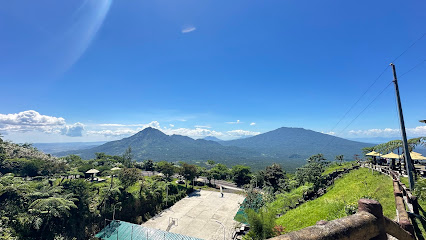
Mayon Volcano center point
Experience the breathtaking beauty of Mayon Volcano, a perfect conical masterpiece and a nature preserve in Albay, Philippines.

Mayon Black Lava Zipline Adventure
Soar above the stunning landscapes of Mayon Volcano with the exhilarating Black Lava Zipline Adventure in Legazpi City, Albay.

Essential places to dine
BIGGS Daraga
Experience the best of comfort food at Bigg's Daraga in Legazpi City—where every meal feels like home.
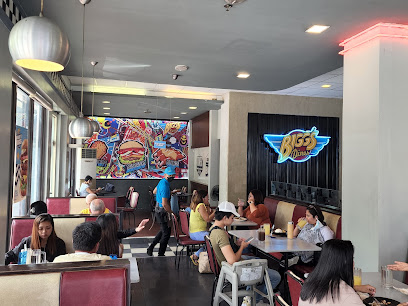
1st Colonial Grill Express
Experience authentic Filipino cuisine at 1st Colonial Grill Express in Legazpi City – where every meal is a taste adventure!
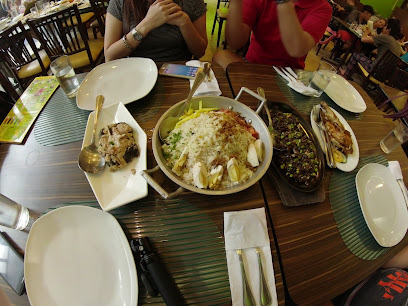
Uncle Ton's
Experience authentic Italian flavors at Uncle Ton's in Legazpi City—where every meal is a celebration of taste.
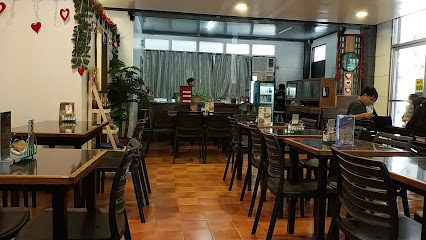
Balay Cena Una
Discover authentic Filipino cuisine at Balay Cena Una - a buffet restaurant blending history and delicious flavors in Legazpi City.

Casa Lorenzo Food and Culture
Experience authentic Filipino cuisine at Casa Lorenzo in Legazpi City – where flavor meets culture in every dish.

Catyel's Kinalas & Restaurant
Experience authentic Filipino cuisine at Catyel's Kinalas & Restaurant in Santo Domingo - where every dish tells a story.

Weekends Restogrill Restaurant
Savor authentic Filipino cuisine at Weekends Restogrill Restaurant in Legazpi City - a true culinary gem blending tradition and taste.
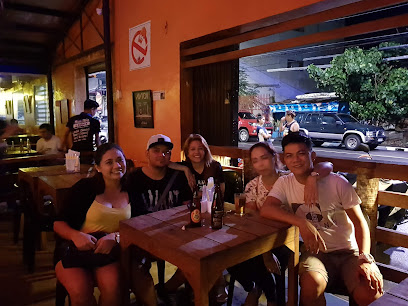
Socorro's Lakeside Restaurant and Grill
Experience authentic Filipino flavors amidst stunning lakeside views at Socorro's Lakeside Restaurant and Grill in Camalig.

Balay sa Bikol
Experience authentic Filipino flavors at Balay sa Bikol—a cozy restaurant and café in Daraga offering a taste of Bicol's culinary heritage.

Layag Restaurant And Grill
Discover the flavors of the Philippines at Layag Restaurant And Grill in Legazpi City - where authenticity meets deliciousness.

Red Labuyo Restaurant
Experience authentic Bicolano cuisine at Red Labuyo Restaurant in Daraga – where tradition meets flavor in every dish.

CASA DE SIKATUNA Garden Restaurant
Experience authentic Filipino grilling amidst serene gardens at CASA DE SIKATUNA Garden Restaurant in Legazpi City.

Graceland
Discover authentic Filipino flavors at Graceland in Daraga - where every meal tells a story.

Antonia's Restaurant, Cafe and Events Place
Experience the best of Filipino cuisine at Antonia's Restaurant in Daraga, Albay – where flavors meet hospitality in a charming setting.

The Spice Rack Food House
Experience authentic Filipino cuisine at The Spice Rack Food House in Legazpi City - where every dish tells a story.
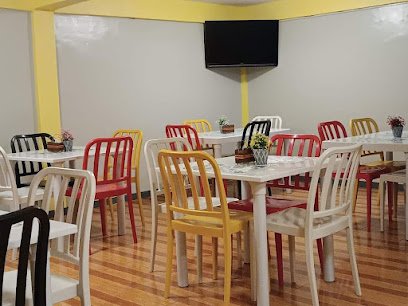
Markets, malls and hidden boutiques
N. Bolaños Handicraft
Explore N. Bolaños Handicraft for authentic Filipino souvenirs and unique gifts, reflecting the artistry and culture of the beautiful Albay region.

Napay Store
Discover the essence of local life at Napay Store, your go-to convenience store in Camalig for snacks, essentials, and a taste of Filipino culture.
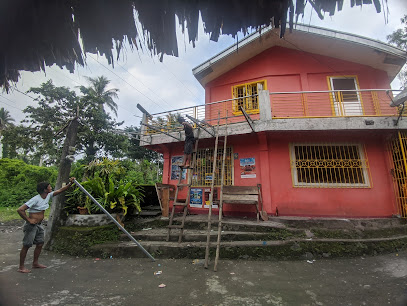
J Gift Shop at Furniture
Explore J Gift Shop in Legazpi City for unique souvenirs and local crafts that embody the spirit of the Philippines.

Matocinos Store
Explore Matocinos Store in Daraga for an authentic shopping experience filled with local crafts, delicious snacks, and warm hospitality.

Sadie Store
Discover local flavors and fresh produce at Sadie Store in Guinobatan, Albay, a perfect stop for every traveler seeking authentic Filipino experiences.

Miravalles Store
Discover the charm of local shopping at Miravalles Store in Daraga, Albay, a treasure trove of goods and cultural experiences.

NAPPA Food & Craft Pasalubong Center
Explore the vibrant NAPPA Food & Craft Pasalubong Center in Camalig, Albay for authentic local souvenirs and culinary delights.

DIJ COLLECTIONS
Explore the artistic treasures of DIJ Collections, a unique gift and bag shop in Tabaco City, showcasing local craftsmanship and memorable souvenirs.

MAYON SHOPMERT
Explore the best of Tabaco City with Mayon Shopmart, your ultimate convenience store for local snacks and travel essentials.

Lavoisier's Store
Discover essential supplies and local treats at Lavoisier's Store, your go-to convenience store in Santo Domingo, Albay for all your travel needs.

MARY ANN STORE
Explore Mary Ann Store in Santo Domingo for unique local crafts and authentic Filipino products that capture the spirit of Albay.

RMADOTCO Arts and Crafts
Explore RMADOTCO Arts and Crafts in Camalig for unique, handcrafted gifts that celebrate the vibrant artistry of Albay.

Murillo's Store & Printing
Explore local flavors and printing services at Murillo's Store & Printing in Santo Domingo, Albay – your essential stop for convenience.

Mayon Shopmart
Mayon Shopmart: Your 24/7 Convenience Stop in Tabaco City, Albay, offering local snacks and essentials for every traveler.

KarryKarry UkayUkay
Discover unique fashion treasures at KarryKarry UkayUkay in Guinobatan, Albay - where style meets affordability in a vibrant setting.

Essential bars & hidden hideouts
Bar 101
Experience the vibrant nightlife of Legazpi City at Bar 101, where great drinks and a lively atmosphere meet.

HideOut Bar And Grill
Discover the lively HideOut Bar And Grill in Daraga, Albay, offering a delightful mix of food, drinks, and local culture in a stunning setting.

Highway 21
Discover the vibrant nightlife at Highway 21, a lively bar in Daraga, Albay, offering an eclectic drink menu and a welcoming atmosphere.

Bar-Rax 9 Resto & Events
Discover the vibrant nightlife and authentic flavors at Bar-Rax 9 Resto & Events in Daraga, Albay – a must-visit for tourists seeking local experiences.
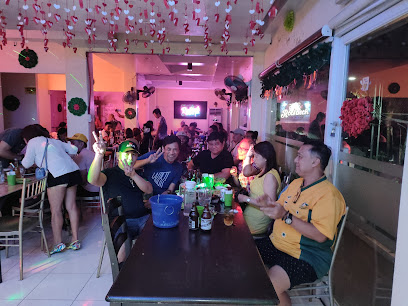
Volcanoes Food Corporation-Ideal Hangout Bar and Restaurant
Discover Volcanoes Food Corporation, a vibrant bar and restaurant in Tabaco City, offering local flavors and a lively atmosphere for tourists.

URBAN Escape Grill and Resto Bar
Experience the best grilled dishes and vibrant atmosphere at URBAN Escape Grill and Resto Bar in Daraga, Albay, a must-visit culinary destination.

Marcianos Bar and Restaurant
Experience unforgettable dining with grilled specialties and stunning coastal views at Marcianos Bar and Restaurant in Albay.

Pang-S Resto Bar & Grill
Discover the vibrant flavors of Albay at Pang-S Resto Bar & Grill, where local cuisine meets a lively atmosphere.

Bamba Resto Bar
Experience the vibrant atmosphere and exquisite flavors of Bamba Resto Bar in Daraga, a must-visit destination for food and drink lovers.

Maf's resto and videoke bar
Experience the vibrant nightlife at Maf's Resto and Videoke Bar in Santo Domingo, Albay - where great food meets unforgettable entertainment!

Muzik3ros Tiki bar Daraga
Discover the vibrant atmosphere of Muzik3ros Tiki Bar in Daraga, where tropical drinks and lively music create an unforgettable nightlife experience.
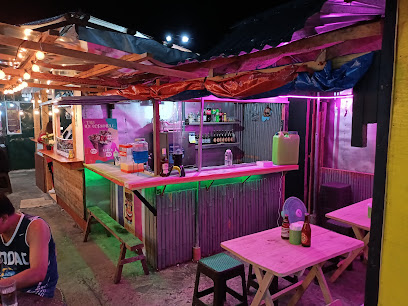
One jump bar
Experience the vibrant nightlife of Albay at One Jump Bar, a perfect spot for travelers to relax and socialize in a lively atmosphere.

Seawall Bar & Grill
Experience the best of grilled cuisine with stunning ocean views at Seawall Bar & Grill in Malilipot, Albay.

TRESMARIA'S KTV BAR
Discover the lively nightlife at TRESMARIA'S KTV BAR in Camalig, where great music, delicious drinks, and unforgettable moments await.

180 Bar
Experience the lively nightlife at 180 Bar in Legazpi City, where refreshing drinks meet local culture and vibrant social gatherings.

Local Phrases about Mt. Mayon
-
- HelloKamusta
[ka-mu-sta] - GoodbyePaalam
[pa-a-lam] - YesOo
[o-o] - NoHindi
[hin-di] - Please/You're welcomeMangyari/Lubos na kasiyahan
[man-gya-ri/lu-bos na ka-si-ya-han] - Thank youSalamat
[sa-la-mat] - Excuse me/SorryPatawad/Pasensya
[pa-ta-wad/pa-sen-sya] - How are you?Kamusta ka?
[ka-mu-sta ka?] - Fine. And you?Mabuti. Ikaw?
[ma-bu-ti. i-kaw?] - Do you speak English?Nagsasalita ka ba ng Ingles?
[nag-sa-sa-li-ta ka ba ng in-gles?] - I don't understandHindi ko maintindihan
[hin-di ko main-tin-di-han]
- HelloKamusta
-
- I'd like to see the menu, pleaseGusto ko sanang makita ang menu, pakiusap
[gus-to ko sa-nang ma-ki-ta ang me-nu, pa-ki-u-sap] - I don't eat meatHindi ako kumakain ng karne
[hin-di a-ko ku-ma-ka-in ng kar-ne] - Cheers!Mabuhay!
[ma-bu-hay] - I would like to pay, pleaseGusto ko sanang magbayad, pakiusap
[gus-to ko sa-nang mag-ba-ya-d, pa-ki-u-sap]
- I'd like to see the menu, pleaseGusto ko sanang makita ang menu, pakiusap
-
- Help!Tulong!
[tu-long] - Go away!Umalis ka!
[u-ma-lis ka!] - Call the Police!Tumawag ng Pulis!
[tu-ma-wag ng pu-lis!] - Call a doctor!Tumawag ng doktor!
[tu-ma-wag ng dok-tor!] - I'm lostNawawala ako
[na-wa-wa-la a-ko] - I'm illMay sakit ako
[may sa-kit a-ko]
- Help!Tulong!
-
- I'd like to buy...Gusto ko bumili ng...
[gus-to ko bu-mi-li ng] - I'm just lookingNagmamasid lang ako
[nag-ma-ma-sid lang a-ko] - How much is it?Magkano ito?
[mag-ka-no i-to?] - That's too expensiveMasyadong mahal iyan
[ma-sya-dong ma-hal i-yan] - Can you lower the price?Pwede bang babaan ang presyo?
[pwe-de bang ba-ba-an ang pres-yo?]
- I'd like to buy...Gusto ko bumili ng...
-
- What time is it?Anong oras na?
[a-nong o-ras na?] - It's one o'clockAlas-uno na
[a-las-u-no na] - Half past (10)Alas-diyes y medya
[a-las-di-yes y med-ya] - MorningUmaga
[u-ma-ga] - AfternoonHapon
[ha-pon] - EveningGabi
[ga-bi] - YesterdayKahapon
[ka-ha-pon] - TodayNgayon
[nga-yon] - TomorrowBukas
[bu-kas] - 1Isa
[i-sa] - 2Dalawa
[da-la-wa] - 3Tatlo
[tat-lo] - 4Apat
[a-pat] - 5Lima
[li-ma] - 6Anim
[a-nim] - 7Pito
[pi-to] - 8Walo
[wa-lo] - 9Siyam
[si-yam] - 10Sampu
[sam-pu]
- What time is it?Anong oras na?
-
- Where's a/the...?Nasaan ang...?
[na-sa-an ang...?] - What's the address?Ano ang address?
[a-no ang ad-dres?] - Can you show me (on the map)?Pwede mo akong ipakita (sa mapa)?
[pwe-de mo a-kong i-pa-ki-ta (sa ma-pa)?] - When's the next (bus)?Kailan ang susunod na (bus)?
[ka-i-lan ang su-su-nod na (bus)?] - A ticket (to ....)Isang tiket (papuntang ...)
[i-sang ti-ket (pa-pun-tang ...)]
- Where's a/the...?Nasaan ang...?
History of Mt. Mayon
-
One of the most significant eruptions in the history of Mt. Mayon occurred on February 1, 1814. This catastrophic event buried the town of Cagsawa in volcanic ash and lava, killing around 1,200 people. The eruption left only the Cagsawa Church belfry visible, which now serves as a poignant historical landmark and tourist attraction.
-
Mt. Mayon’s name is derived from the local term 'Magayon,' which means 'beautiful' in the Bicolano language. According to legend, Daragang Magayon was a beautiful maiden who fell in love with a warrior named Panganoron. Their tragic love story is said to explain the volcano's perfect cone shape, symbolizing Magayon's eternal beauty.
-
During World War II, Mt. Mayon played a strategic role. The Japanese forces used the area around the volcano as a stronghold, and it became a site of significant military engagements. The mountain's rugged terrain provided natural fortifications and vantage points.
-
In 2006, the Philippines nominated Mt. Mayon to be included in the UNESCO World Heritage Tentative List. This nomination underscores the mountain's geological significance, natural beauty, and cultural importance. The application highlights Mt. Mayon as a prime example of a stratovolcano with a nearly perfect cone shape.
-
The eruption in February 1993 was a stark reminder of Mt. Mayon's persistent activity. This event necessitated the evacuation of thousands of residents but fortunately resulted in minimal casualties. It emphasized the importance of modern volcanic monitoring systems, leading to the establishment of the Philippine Institute of Volcanology and Seismology (PHIVOLCS) which continues to monitor the volcano closely.
-
The Bicolanos celebrate various festivals that honor Mt. Mayon, reflecting their deep cultural connection to the volcano. One notable event is the Magayon Festival, held annually in the province of Albay. This festival showcases local arts, crafts, and traditions, celebrating both the natural beauty and cultural heritage of the region.
Mt. Mayon Essentials
-
Mt. Mayon is located in the Bicol Region of the Philippines, specifically in the province of Albay. The nearest airport is Legazpi City Airport, which is approximately 10 kilometers from Mt. Mayon. Several airlines offer daily flights from Manila and Cebu to Legazpi. Alternatively, you can take a bus from Manila to Legazpi, which takes around 10-12 hours. There are also train services from Manila to Naga City, from where you can take a bus or van to Legazpi.
-
Once in Legazpi, you can use various modes of transportation to explore the area. Jeepneys and tricycles are the most common and affordable options for short distances. Taxis and rental cars are also available for more convenience. For those looking to explore the surrounding areas, renting a motorbike is a popular choice. Guided tours are available for those who prefer a more structured visit.
-
The official currency in the Philippines is the Philippine Peso (PHP). Credit cards are widely accepted in hotels, restaurants, and larger shops in Legazpi, but it is advisable to carry cash for smaller establishments and rural areas. ATMs are available in Legazpi City, but it is recommended to withdraw sufficient cash before heading to more remote areas.
-
Legazpi and the Mt. Mayon area are generally safe for tourists. However, it is essential to take standard precautions. Avoid walking alone at night in unfamiliar areas and be cautious with your belongings in crowded places. The Daraga and Legazpi City areas are generally safe, but always stay alert and aware of your surroundings.
-
In case of emergency, dial 911 for immediate assistance. Legazpi City has a hospital and medical facilities available for tourists. It is advisable to have travel insurance that covers medical emergencies. For minor health issues, pharmacies are available in Legazpi where you can purchase over-the-counter medications.
-
Fashion: Do dress modestly, especially when visiting religious sites. Avoid wearing revealing clothing. Religion: Do respect local customs and traditions, especially when visiting churches and other religious sites. Public Transport: Do be respectful and give up your seat to elderly passengers. Don't eat or drink on public transport. Greetings: Do greet people with a smile or a nod. A polite 'po' and 'opo' are appreciated in conversations with elders. Eating & Drinking: Do try local delicacies and accept food offerings graciously. Don't refuse hospitality, as it is considered impolite.
-
To experience Mt. Mayon like a local, visit the local markets in Legazpi City where you can buy fresh produce and traditional Filipino goods. Engage with locals, as they are often friendly and willing to share stories about the area's history and culture. Don't miss visiting the Cagsawa Ruins, which offer a stunning view of Mt. Mayon. For a unique experience, try the ATV tours that take you closer to the volcano's base.
Nearby Cities to Mt. Mayon
-
Things To Do in Boracay
-
Things To Do in Tagaytay
-
Things To Do in Cebu City
-
Things To Do in Manila
-
Things To Do in Bohol
-
Things To Do in Angeles City
-
Things To Do in Subic
-
Things To Do in Siargao
-
Things To Do in Camiguin
-
Things To Do in Baguio
-
Things To Do in Sagada
-
Things To Do in Cagayan de Oro
-
Things To Do in Vigan
-
Things To Do in Ilocos Norte
-
Things To Do in Puerto Princesa










